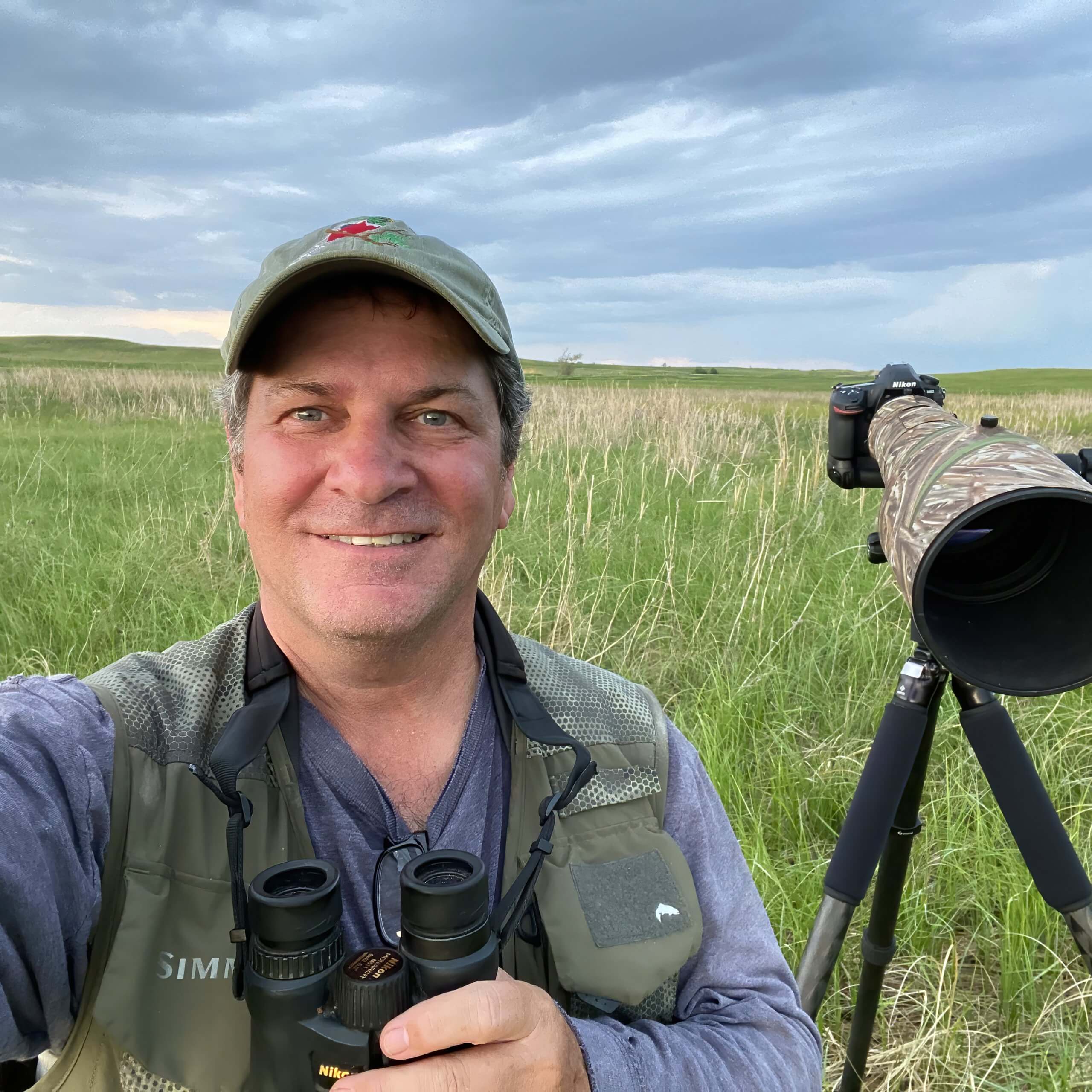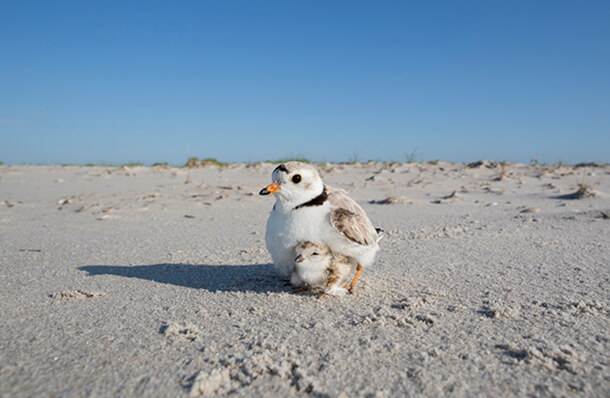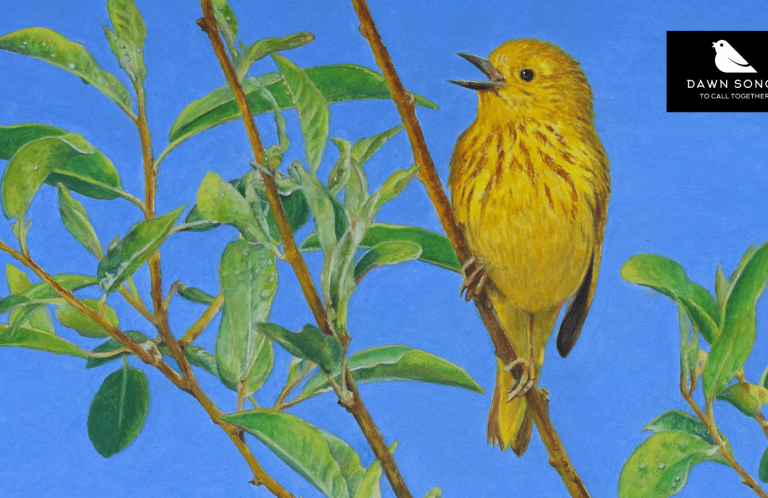A Photographic Atlas to Spark a Lifelong Love of Birds

Birds of North America: A Photographic Atlas is a sweeping project from Bruce M. Beehler and photo editor Brian E. Small to document all 1,144 bird species in North America, including Hawai'i. American Bird Conservancy (ABC) is proud to sponsor the book, with one-third of proceeds from the book benefiting ABC's work to conserve wild birds and their habitats throughout the Americas. The book is available through Johns Hopkins University Press.

An excellent resource for both newcomers to birding and seasoned birders alike, Birds of North America: A Photographic Atlas is thoroughly researched and features the most up-to-date data available. Beehler, a Research Associate in the Division of Birds at the National Museum of Natural History, Smithsonian Institution, lends his research and expertise to crafting the accounts of the 1,144 species profiled in the book. Accounts are brought to life by more than 1,200 brilliant, full-color photographs, edited by renowned photographer, Brian E. Small. These photographs provide a high level of detail for each species, showing birds in their most eye-catching plumage and set against the background of their natural habitat.
The book provides an entry point to the wide variety of species found in North America and Hawai'i. Its layout is beginner-friendly, with an easy-to-follow and logical format. It begins with a handy guide to geographical and technical terminology that elucidates often-used but not widely understood terms like “confiding” and “lek.”
Michael J. Parr, President of ABC, authored the foreword to the book, noting the birds that sparked his sense of wonder as a young boy growing up in Britain. He caught the birding bug early, he says, and the allure of North America's warblers in their spring breeding plumage brought him to the U.S. It was a nature guide — specifically, Roger Tory Peterson's Field Guide to the Birds of Britain and Europe — that opened his eyes to the diversity, beauty, and dynamism of birds. Birds of North America: A Photographic Atlas will surely provide the same eye-opening experience for others.
“Birds have led me on a spectacular journey throughout my life,” Parr wrote. “This wonderful book can be the beginning of your journey with birds, or, it can help to build your knowledge of birds you are already familiar with.”

Each species account provides a concise yet rich description of the appearance, behavior, nesting biology, ecology, seasonal migration, and conservation status. The book's more than 700 range maps are large, easy to read, and offer the most up-to-date information on birds' territories. The book is arranged by bird family, with a useful guide to the ecology, behavior, and habitats of family groups included. The imperiled birds of the Hawaiian islands are featured in a section of their own. A section featuring a mix of photographs and illustrations of species we have lost follows shortly after, a sobering reminder of the looming consequences should we fail to protect the endemic species that face grave threats in Hawai'i.
The rarities section of the Atlas is a treasure trove of the birds that have found themselves often very far from their home ranges and managed to be spotted by keen birders. Beehler and Small note in the introduction that this section grew as the book was coming together, naturally, “because birds have wings and show a propensity to wander far and wide.”
Beyond the accounts of all 1,144 birds found across North America and Hawai'i, the book also provides practical resources for those hoping to get closer to birds and contribute to their conservation. Special sections provide a wealth of information for new and expert birders alike, offering an up-to-date overview of the most popular apps and websites for birding, from tools like eBird for logging observations to timely community science-driven initiatives such as Project FeederWatch.
Beehler and Small make it clear that adventuring out to experience birds is the aim of this impressive reference tool. With their gorgeous photography and straightforward, accessible accounts of every species from vagrant Steller's Sea-Eagles to the range-restricted and Near Threatened Greater Sage-Grouse, the authors hope to turn readers into birders. Why? They share a belief that the more birders there are out in the world, “the better our world will become — especially if these birders become participating members” of conservation organizations like ABC.
The book also offers helpful tips for getting closer to birds without ever leaving home by outfitting your yard with everything from native plants to nest boxes. Importantly, Beehler and Small's Atlas also provides an overview of the major conservation challenges facing birds while sharing recent conservation success stories and calling on those who love birds to take action.
“Many of the great accomplishments in nature conservation were carried out by naturalists who fell in love with birds,” the author wrote. This beautiful reference book can be the start of a great appreciation for the avifauna of North America and the beginning of a lifelong love for birds.
 |
Birds of North America: A Photographic Atlas by Bruce M. Beehler and photo editor Brian E. Small is available as a hardcover and an eBook through Johns Hopkins University Press. One-third of the proceeds from book sales support ABC's work to conserve wild birds and their habitats. Bruce M. Beehler is a research associate in the Division of Birds at the National Museum of Natural History, Smithsonian Institute. He is also a scientific affiliate of American Bird Conservancy. He has written more than a dozen nature books, including Birds of Maryland, Delaware, and the District of Columbia and North on the Wing: Travels with the Songbird Migration of Spring. |
 |
Brian E. Small, photo editor of the Atlas, is a renowned bird photographer. His work has appeared on the pages of more than 50 books. |
###
American Bird Conservancy (ABC) takes bold action to conserve wild birds and their habitats throughout the Americas. Inspired by the wonder of birds, we achieve lasting results for the bird species most in need while also benefiting human communities, biodiversity, and the planet's fragile climate. Our every action is underpinned by science, strengthened by partnerships, and rooted in the belief that diverse perspectives yield stronger results. Founded as a nonprofit organization in 1994, ABC remains committed to safeguarding birds for generations to come. Join us! Together, we can do more to ensure birds thrive.
Media Contact
Jordan Rutter
Director of Communications
media@abcbirds.org


















































